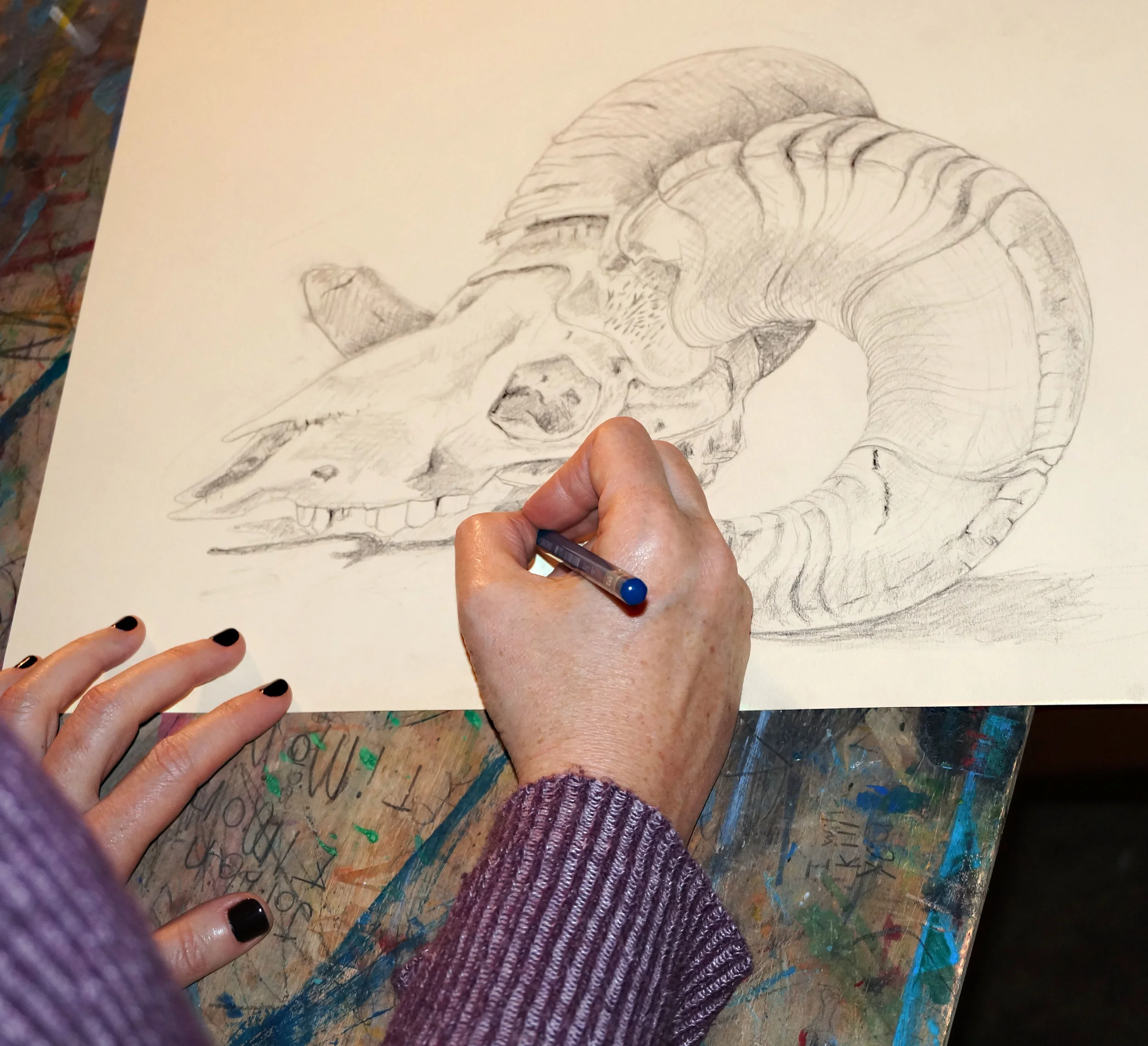Welcome to Drawing For Painters Course
This course helps beginner drafters and accomplished painters up their drawing skills quickly. Check out the slide show for a few sketchbook progressions from my students. After this course, painters will be able to compose and design paintings, paint buildings accurately and geek out on how cool ellipses are to draw. Come to class and learn to get it right.
Sample syllabus for a ten-week course:
Class 1: Proportion and perspective.
Negative space + tilt lines + Durer’s (imaginary) Window = accurate drawing. How to make three dimensional subjects translate to the two dimensions of drawings. Upside-down drawings.
Class 2: Negative space and composition.
Draw what isn’t there. Negative space and composition studies. Seeing things in black and white and arranging them in your picture plane. Also, a drawing by touch exercise, which seems weird, but turns out awesome drawings.
Class 3: Line and mass drawing,
Spontaneous gestural drawing and controlled contours. The intricacies of line. Line vs. mass drawing. Changing our ideas of things into true observation.
Class 4: The Value of of Light and Dark
Drawing white, gray and black things. Using the full power of your materials. Separating color from value. Different ways to shade things. Making a gray scale with the specific media you are using.
Class 5: Color Introduction
Meet the Watercolors, color theory, testing out the materials. Making and using a color wheel, and why.
Class 6: Color Theory. The intrinsic value of a color. Color charts. Watercolor Demonstrations and trials. Meet Mud, Meet Chalk and what to do about them.
Class 7: Color over Value
Using different values and textures to depict color in black and white drawings.
Class 8) Watercolor or colored pencil drawings.
How to use water-soluble pencils. Laying water color over pen and ink drawings and other mixed-media marvels.
Class 9) Conceptual Drawing: Using your drawing skills to imagine things-- comic books, political cartoons, illustrations
Class 10) Drawing from secondary sources, Using photos, sketches or public domain materials to create a finished piece without falling into the usual traps of drawing from anything but life. Sort of a continuation of the previous week.
Materials:
- 1 each of 2H, HB and 4B pencils
- White eraser in a plastic holder.
- A small watercolor pencil kit with 6-10 pencils. Caran d’Ache and Rembrandt are both good brands.
- Spiral bound sketch book, 9 x 12 or a bit larger.
- Micron Pigma pens, 1 and 3. Sharpies will do.
- Pencil sharpener with a reservoir built in for the shavings.
- A little satchel or tool box to carry your supplies in.
Studio Equipment:
Tables, Chairs, easels. A strong Spotlight and high table to set up still-lifes.

